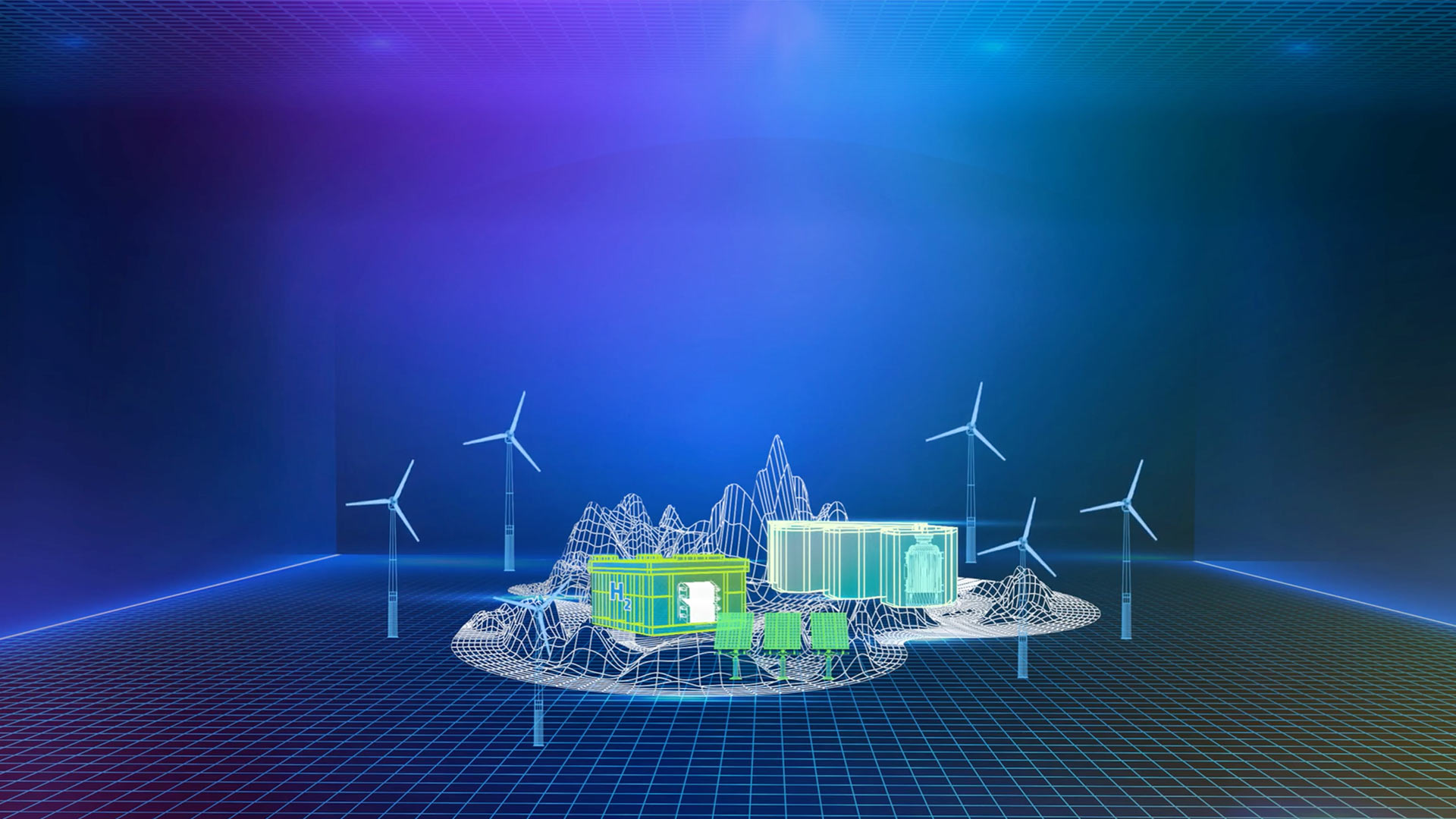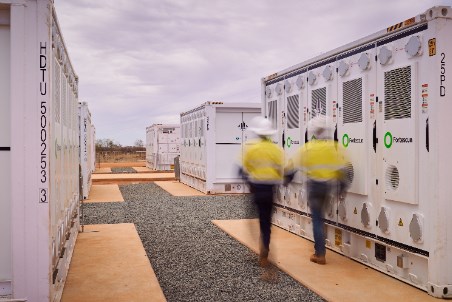Energy needs are changing—Is your control system ready? – power-eng.com

Report on Advanced Energy Control Systems and their Contribution to Sustainable Development Goals
1.0 Introduction: The Evolving Energy Landscape
The global power industry is undergoing a significant transformation driven by technological advancements, shifting environmental priorities, and increasing consumer expectations. This evolution has created a more volatile energy landscape, placing considerable strain on existing distribution infrastructure. Distributed Generation (DG), the practice of generating energy closer to the point of consumption, has emerged as a key strategy to bolster infrastructure resilience. Central to the success of DG are advanced energy control systems, which are critical for managing distribution, ensuring reliability, and supporting the achievement of global sustainability objectives.
This report examines the role of scalable, adaptive energy control systems in optimizing performance and reliability, with a specific focus on their alignment with the United Nations Sustainable Development Goals (SDGs).
2.0 Drivers for Smart Control Systems and Alignment with SDGs
2.1 Technological and Grid Demands
Several factors are fueling the demand for intelligent energy control solutions:
- Rise of High-Demand Technologies: The proliferation of generative artificial intelligence (AI) and data centers is reshaping energy consumption patterns. AI workloads can cause unpredictable demand spikes, challenging traditional forecasting models and increasing the need for responsive energy resources.
- Grid Volatility: Modern grids face more frequent disruptions and load swings than in the past, necessitating a greater reliance on distributed energy resources (DERs) to maintain stability.
- Integration Complexity: As more DERs are connected to the grid, the need for scalable, “plug-and-play” control solutions becomes paramount to ensure seamless operation and overall grid resiliency.
2.2 Contribution to Sustainable Development Goals (SDGs)
Advanced control systems are instrumental in advancing several key SDGs:
- SDG 7 (Affordable and Clean Energy): By enabling the seamless integration of intermittent renewable energy sources such as solar and wind, these systems are fundamental to increasing the share of clean energy in the global mix.
- SDG 9 (Industry, Innovation, and Infrastructure): Smart controls represent a critical innovation for building resilient, reliable, and sustainable energy infrastructure, which underpins modern industry and economic development.
- SDG 11 (Sustainable Cities and Communities): Enhanced grid stability and the reduction of power outages contribute directly to the creation of safe, resilient, and sustainable urban environments.
3.0 The Function of Adaptive Control Systems in Modern Grids
3.1 Core Functionality
Energy control systems serve as the central intelligence of a power system. Their primary functions include:
- Connecting distributed power assets to the utility grid.
- Monitoring and adjusting energy flows in real-time.
- Facilitating grid interaction to supplement power as needed.
3.2 Enhancing Grid Stability and Supporting Climate Action (SDG 13)
Control systems are vital for managing the challenges associated with a diversified energy portfolio. They dynamically adjust to load swings and the variable output of renewables, thereby maintaining grid stability and minimizing disruptions that can lead to outages. By facilitating a higher penetration of renewable energy sources, these technologies directly support SDG 13 (Climate Action) by helping to reduce dependence on fossil fuels and lower carbon emissions.
4.0 Analysis of a Modular and Scalable Solution: The Cat Energy Control System (ECS)
4.1 Design Principles for Grid Reliability
The Cat Energy Control Systems (ECS) portfolio was developed with a focus on simplicity, scalability, and user-friendliness to meet major grid requirements. The system’s architecture is designed for enhanced functionality and serviceability. Utilizing a single-source supplier for both power generation assets and their control systems can lead to a more powerful, integrated solution that offers lower lifecycle costs and higher operational reliability.
4.2 Key System Components and Scalability
The modular, “building block” design of the ECS platform ensures flexibility and future-proofing for energy systems.
- Modular Components: Allows for the simple addition or replacement of parts to accommodate system growth or technological upgrades.
- Data Management: Scalable architecture is capable of handling the large volumes of data generated by complex energy systems, including DERs.
- Flexibility and Scalability: The product line is designed to support diverse operational needs, from simple standby power to complex microgrids.
4.3 Product Tiers
The ECS portfolio includes a range of controllers to meet specific site requirements:
- ECS 100: A control system for simple standby applications.
- ECS 200: Designed for genset paralleling, cogeneration systems, and grid code compliance.
- ECS 300: Manages utility breaker control and complex site-level assets.
- ECS 400: Provides full microgrid supervisory control, customizable for complex site or utility schemes.
5.0 Implementation and Support
Expert engineering support is crucial for designing and implementing integrated power systems. Customization of the sequence of operations ensures that solutions are precisely aligned with operational requirements. Ongoing support, including system retrofits and modernization, is essential for adapting to technological changes and ensuring that power systems continue to meet their performance and sustainability objectives throughout their entire operational life.
Analysis of Sustainable Development Goals in the Article
1. Which SDGs are addressed or connected to the issues highlighted in the article?
-
SDG 7: Affordable and Clean Energy
The article directly addresses this goal by focusing on the need for “reliable energy” and the integration of renewable sources. It discusses the challenges of incorporating intermittent power sources like “solar or wind power” and how advanced control systems are essential to manage them, thereby contributing to a cleaner and more reliable energy mix.
-
SDG 9: Industry, Innovation, and Infrastructure
This goal is central to the article, which describes a “transformation” in the power industry. It highlights the need to bolster “distribution infrastructure” to make it more resilient and reliable. The entire discussion revolves around innovation, specifically the development of “smarter technologies” and “scalable, adaptive energy control systems” like the Cat ECS to upgrade existing infrastructure and support modern energy demands from data centers and AI.
-
SDG 11: Sustainable Cities and Communities
The article connects to this goal by emphasizing the importance of a stable power supply for modern life. It mentions that “disruptions can lead to power outages” and that control systems are critical for “grid stability.” By promoting “Distributed Generation,” which brings power generation closer to the consumer, and ensuring a resilient grid, these technologies support the development of safe, resilient, and sustainable communities that rely on uninterrupted power for their daily functions and economic activities.
2. What specific targets under those SDGs can be identified based on the article’s content?
-
Target 7.1: Ensure universal access to affordable, reliable and modern energy services
The article’s primary focus is on overcoming the challenge of a “volatile power landscape where reliable energy is hard to find.” It explains how advanced control systems are “critical to resiliency and energy reliability” and help “reduce outages,” directly aligning with the goal of ensuring reliable energy services.
-
Target 7.2: Increase substantially the share of renewable energy in the global energy mix
The text explicitly states that control systems address “challenges associated with integrating other energy sources,” including intermittent ones like “solar or wind power.” By enabling the stable integration of these sources, the technology helps increase the proportion of renewable energy in the power grid.
-
Target 9.1: Develop quality, reliable, sustainable and resilient infrastructure
The article is fundamentally about enhancing infrastructure. It argues that “distribution infrastructure is operating under increased demand” and that solutions like Distributed Generation and smart controls are needed to “bolster the infrastructure” and improve “grid resiliency.”
-
Target 9.4: Upgrade infrastructure and retrofit industries to make them sustainable… with greater adoption of clean and environmentally sound technologies
The promotion of “scalable, adaptive energy control systems” is a direct call to upgrade existing power infrastructure. These systems are presented as a “smarter” technology that enables the integration of renewable energy and helps producers and consumers “reach their sustainability goals,” which is the essence of this target.
3. Are there any indicators mentioned or implied in the article that can be used to measure progress towards the identified targets?
- Reduction in Power Outages: The article states that if a “control system minimizes disruptions, it can also reduce outages.” This implies that the frequency and duration of power outages serve as a direct indicator of progress towards ensuring reliable energy (Target 7.1) and resilient infrastructure (Target 9.1).
- Integration Level of Renewable Energy Sources: The article discusses the importance of control systems in “incorporating sources that may be intermittent, such as solar or wind power.” The ability of the grid to successfully integrate and manage a higher percentage of these renewable sources can be used as an indicator for progress towards Target 7.2.
- Grid Stability and Management of Load Swings: The text highlights that today’s grid must manage “unexpected” spikes and “load swings” from AI and data centers. The effectiveness of control systems in maintaining grid stability under these volatile conditions is an implied indicator of infrastructure resilience and quality (Target 9.1).
- Adoption of Advanced Control Systems: The article advocates for the adoption of “simple, scalable architecture for greater functionality and serviceability,” such as the Cat ECS portfolio. The rate of adoption of such advanced, modular, and scalable control technologies within the power industry can serve as an indicator for the technological upgrading of infrastructure (Target 9.4).
4. Table of SDGs, Targets, and Indicators
| SDGs | Targets | Indicators Identified in the Article |
|---|---|---|
| SDG 7: Affordable and Clean Energy | 7.1: Ensure universal access to affordable, reliable and modern energy services.
7.2: Increase substantially the share of renewable energy in the global energy mix. |
|
| SDG 9: Industry, Innovation, and Infrastructure | 9.1: Develop quality, reliable, sustainable and resilient infrastructure.
9.4: Upgrade infrastructure and retrofit industries to make them sustainable… with greater adoption of clean and environmentally sound technologies. |
|
| SDG 11: Sustainable Cities and Communities | 11.1: Ensure access for all to adequate, safe and affordable housing and basic services (of which reliable energy is one). |
|
Source: power-eng.com

What is Your Reaction?
 Like
0
Like
0
 Dislike
0
Dislike
0
 Love
0
Love
0
 Funny
0
Funny
0
 Angry
0
Angry
0
 Sad
0
Sad
0
 Wow
0
Wow
0



















































.jpg.webp?itok=0ZsAnae9#)

























